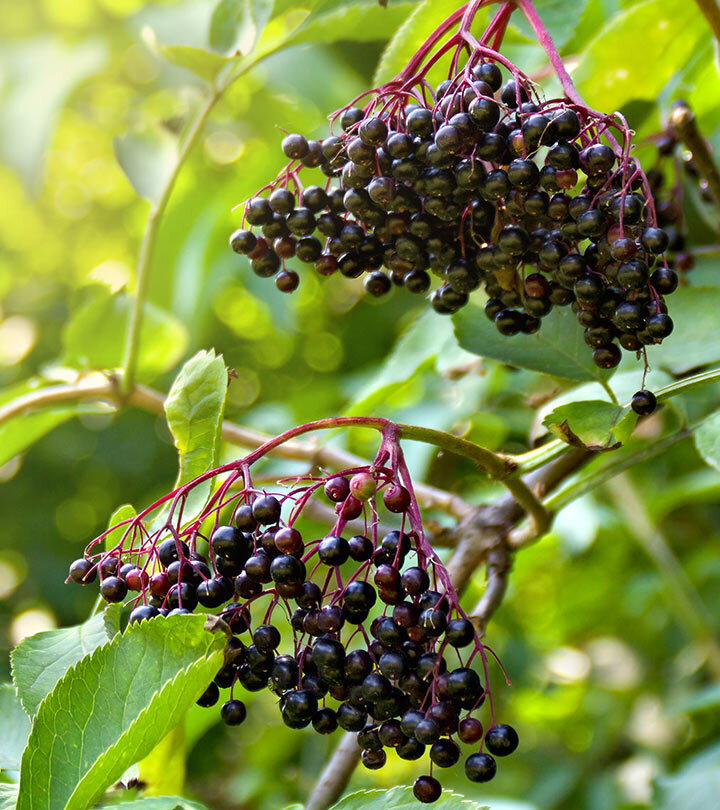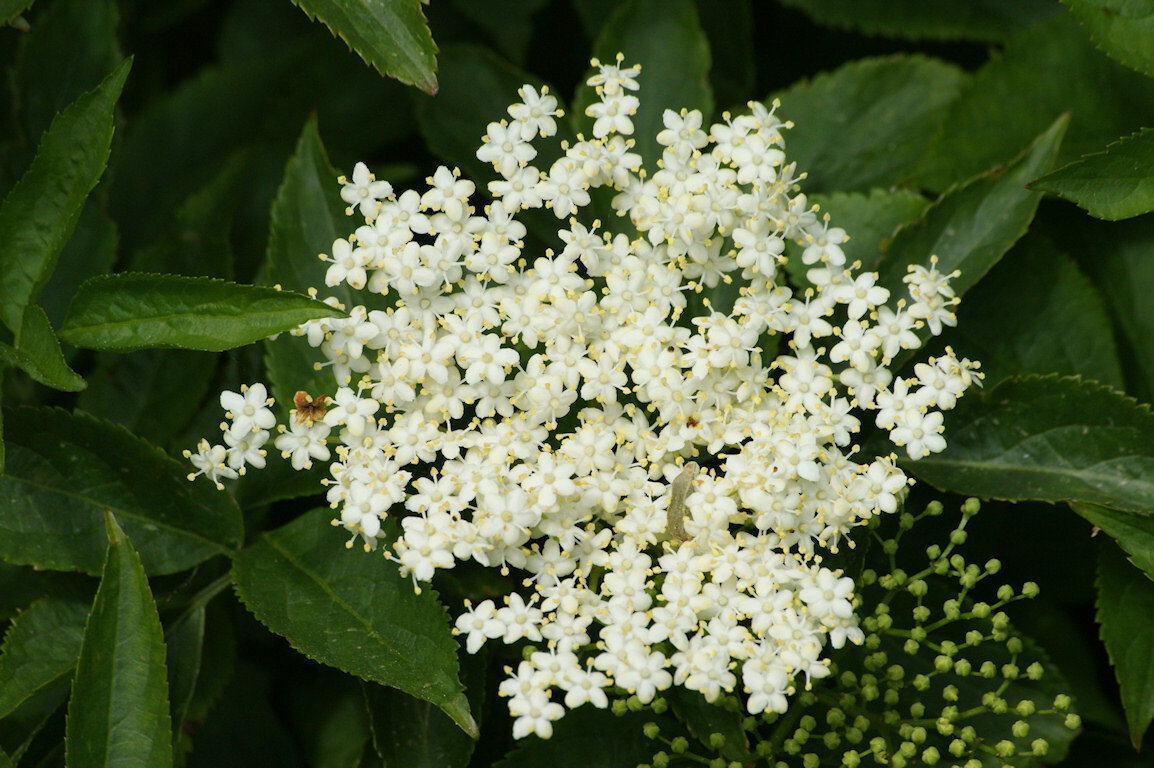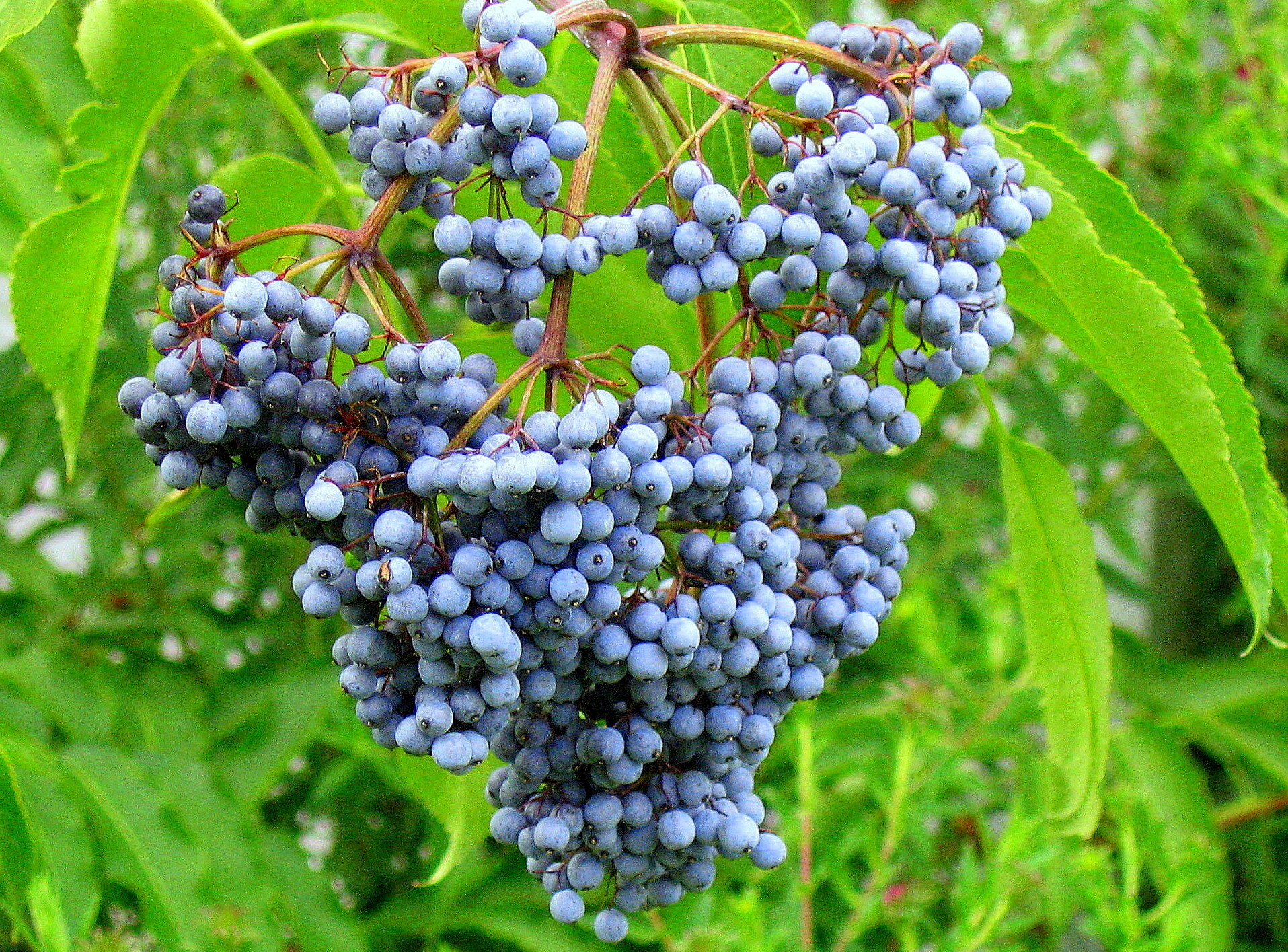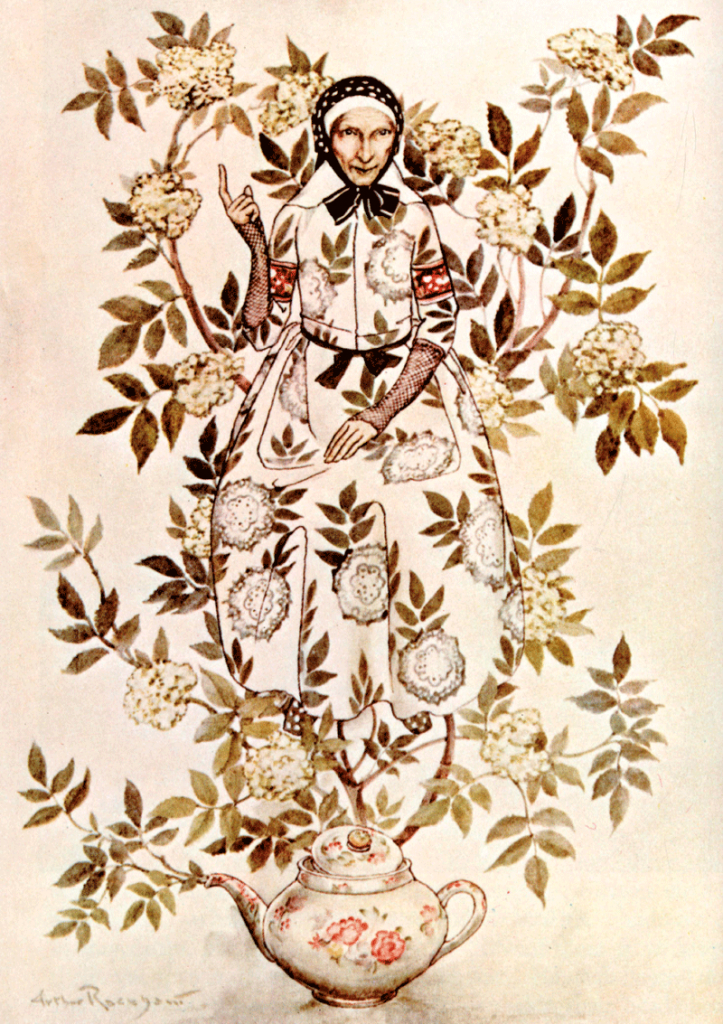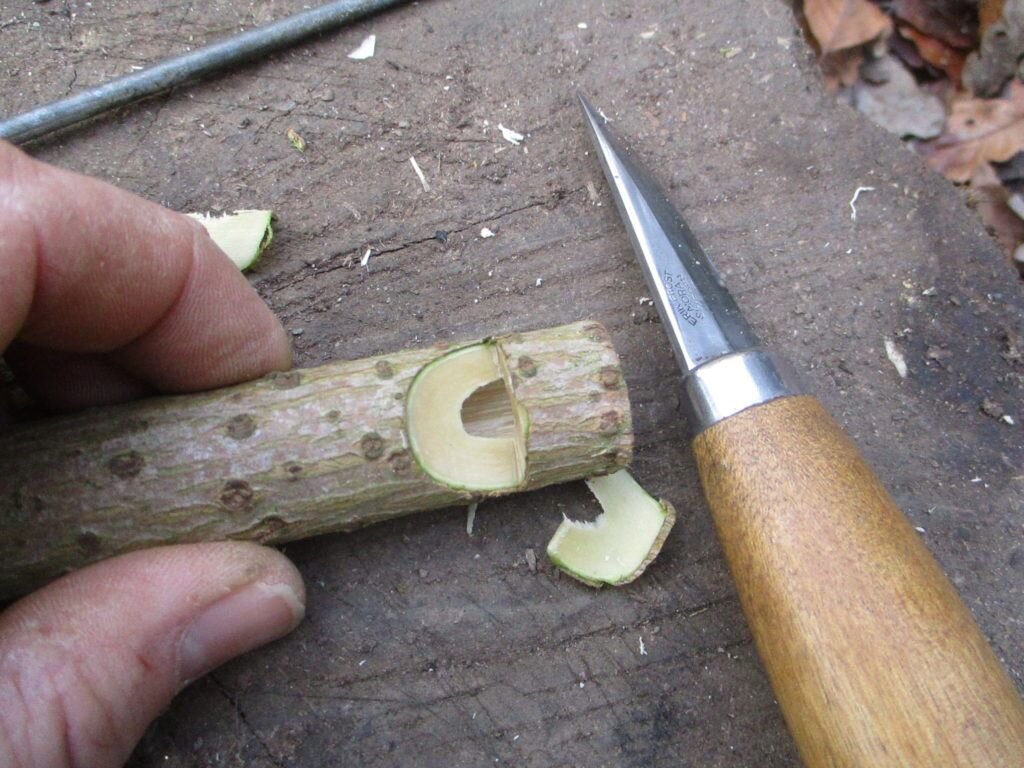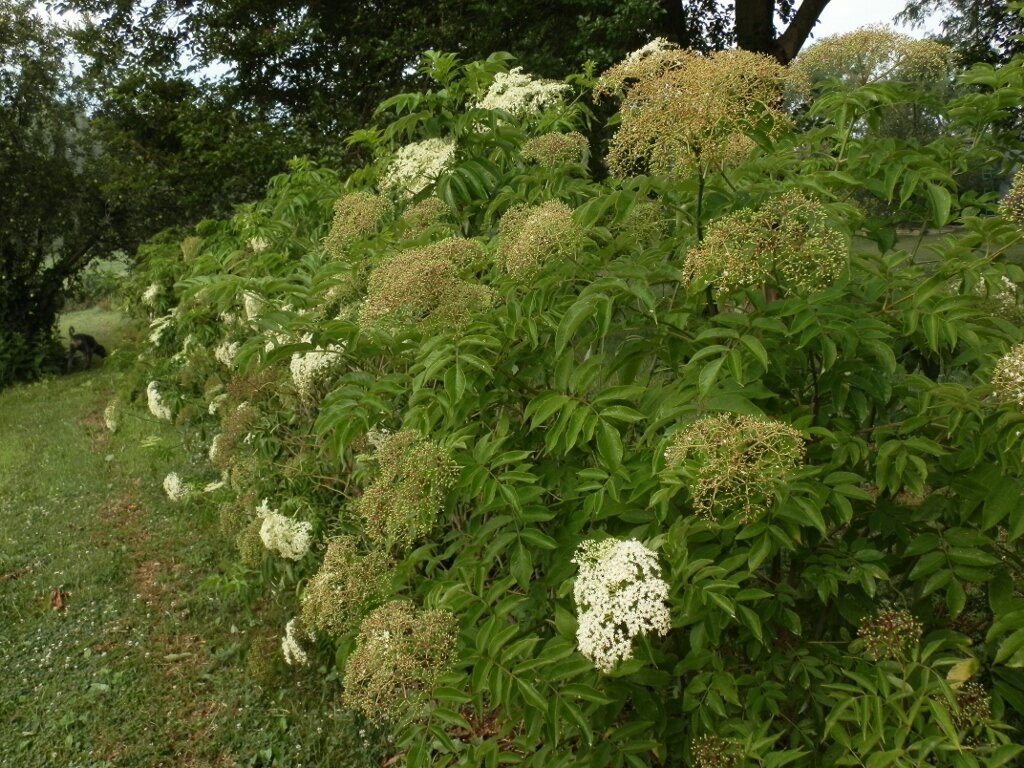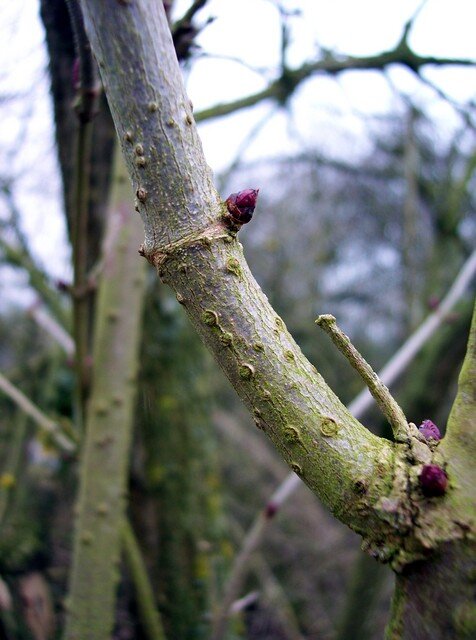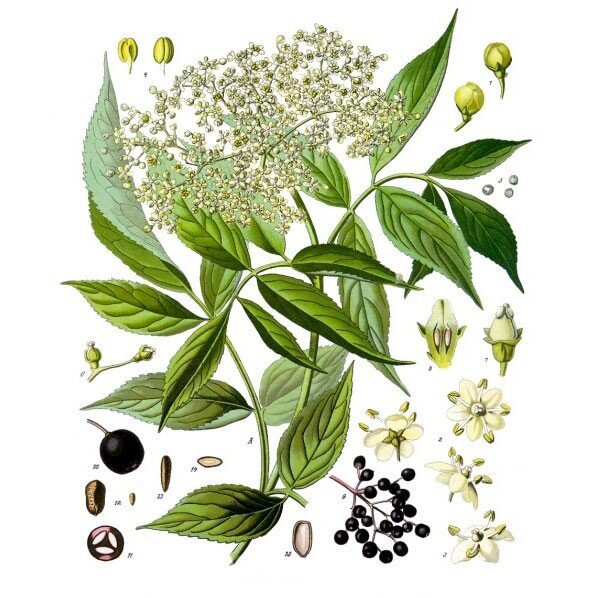The Elder, a wise and protective tree known for its medicine, folk lore and connection to the magical realms. A tree often feared and revered by country folk of the past, the Elder demands respect and shares its powerful medicine in return.
Elder
Botanical (Latin) Name : Sambucus nigra (European), Sambucus canadenisis (American), Sambucus creulea (blue), Sambucus racemosa(red)
Common Name : Black Elder; Blue Elder, Red Elder
Family : Adoxaceae
Parts Used : Bark, leaves, flowers & berries
Ruling Planet : Saturn
Beautiful Berries & All Their Glory
Connected to folk medicine for generations, each part of the elder tree has been used medicinally at one time or another, yet it's the berries and blossoms which are still used today. The two most common and readily available species of Elder are the American Elder, (Sambucus canadenisis) and the European variety, (Sambucus nigra). Berries produced by the Elder have been made into wine and syrup throughout the ages as a tonic to prevent cold and flu, strengthen the immune system and remove stagnation from the body. Other popular tonic foods made with the berries include jam, jelly, chutney, juice, pie, and infused vinegar. The berries have a diuretic action and help remove excess fluid from the body, relieve pain, surface bruises, help heal varicose veins and cold, damp tissue states. As a diaphoretic, they encourage fever and help the body naturally “burn off” viruses more effectively. Elder berry is remarkably safe for babies, children, the elderly and those with auto-immune conditions. Elder berries are high in bioflavonoids, antioxidants, potassium, vitamins A, B, and B6 and have more vitamin C than oranges. The antioxidants present in the berries can help lower cholesterol, improve vision, promote heart health and fight bacterial and viral infections. Elder berries increase the production of group of proteins in our bodies known as cytokines. Naturally secreted by the cells of our immune system, these proteins create a boundary around the cells in our body when a virus is present. This boundary helps prevent a virus from entering the cell wall and stops it from replicating making elder berry an affective remedy to preventative colds and flus. When taken at the first sign of a cold or flu elder berries help reduce the duration and severity of illness. The berries contain a large amount of bioflavonoids which have a cooling effect on the body and provide relief from inflammation, protection to the heart and the cardiovascular system.
Folk Magic & Protective forces
The Elder is an old crone tree. The spirit of a witch is said to inhabit each elder. In Denmark the elder witch was called 'Hyldemoer' meaning 'Elder Mother'. This elder mother protected the tree and granted ill luck to anyone who cut and used the tree's wood, or harvested its medicine, without firstly asking her for permission. Often called “witches wood”, elder was used by witches of Ireland to fashion their broomsticks. Regularly found thriving at moist edges of forests, fields and meadows, elder creates a natural boarder and was frequently used to make fencing to enclose one's property. Elder's highly protective energy has been connected to Saturn, the ruling planet of the elder tree. Saturn is know as an inhibitor, a container and protective force. Elder was, and still is used as a talisman to ward off evil and drive away witches and thieves. Twigs of elder tied into 3 or 4 knots and carried in one's pocket as a charm was believed to prevent rheumatism. Stems of the tree contain an easy to remove inner pith which gave way to its folk name, “pipe tree”. Hollowed out branches of Elder were used as billows to stoke fires and made into whistles and flutes. In some circles, whistles of elder were used to summon spirits. The hollow stems of elder indicate its affinity for the tubular parts of the body e.g. veins, bronchial tubes, digestive system and the heart. Elder is a powerful divination tool and helps one to gaze into Other realms and reveal that which needs to be seen. During times of trauma and loss, elder helps to lift grief, offer support, protect one's spirit and create energetic boundaries.
Elder in the Wild
The American elder is a hardy perennial, typically 5' - 12' tall and thrives in moist, wet soils along the perimeter of forests, meadows and fields. It produces 6''-10'' wide clusters of fragrant, cream colored blossoms in early – mid summer and drooping clusters of deep purple or powdery blue berries in late summer – early autumn. A signature to help identify elder are the wart like bumps present on its’ limbs. When identifying elder, be sure to check for the above signatures. Before harvesting any part of the tree, be sure to ask the elder mother for permission, harvest only what you need and give thanks. It should be noted that the berries of the Red Elder are considered toxic and are not recommended as medicine.
Common to many parts of the world, The Elder is a powerful tree. Be it berries for syrup and jam or blossoms for cordials and champagne, the strong medicine and magical influence of the Elder tree is timeless and highly effective.
Sources:
Boyer, Corinne. Under the Witching Tree : Troy Books, 2016. Print.
Beyerl, Paul. The Master Book of Herbalism : Phoenix Publishing Co., 1984. Print
Grieve, Ms.M. A Modern Herbal : Volume 1 (A-H), Dover Publications, 1972. Print.
Wood, Matthew. The Book of Herbal Wisdom: Using Plants as Medicine : North Atlantic Books, 1997. Print.
http://www.jonsbushcraft.com/elderwhistle.htm
https://www.arborday.org/trees/treeguide/TreeDetail.cfm?ItemID=837
https://garden.org/ediblelandscaping/?page=july_elderberry
http://www.gallowaywildfoods.com/seasonal-notes/june-elderflowers/
http://www.evolutionaryherbalism.com/2016/08/16/elderberry-not-just-an-immune-stimulant/


